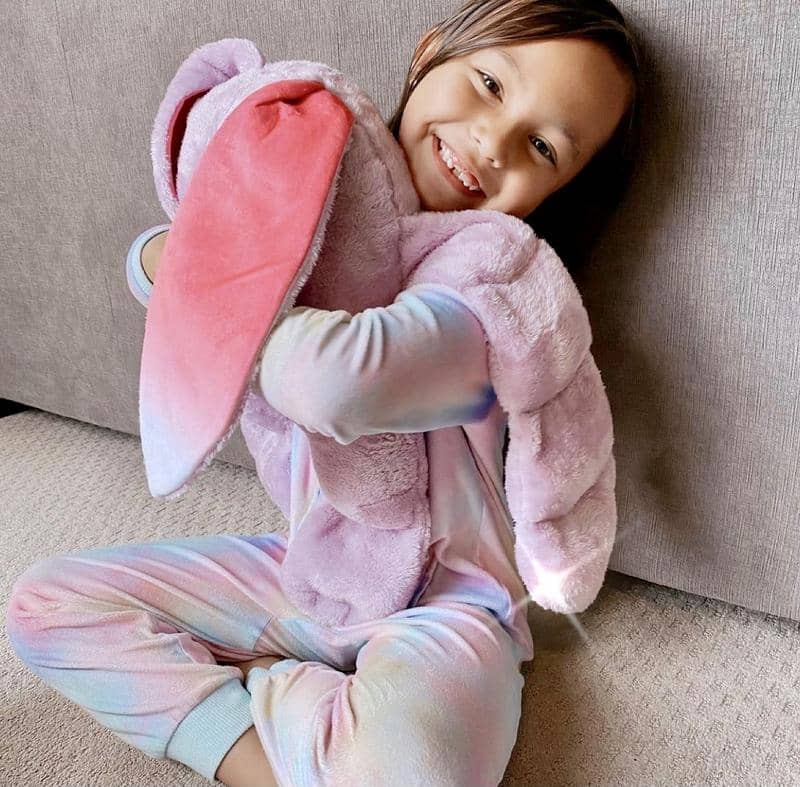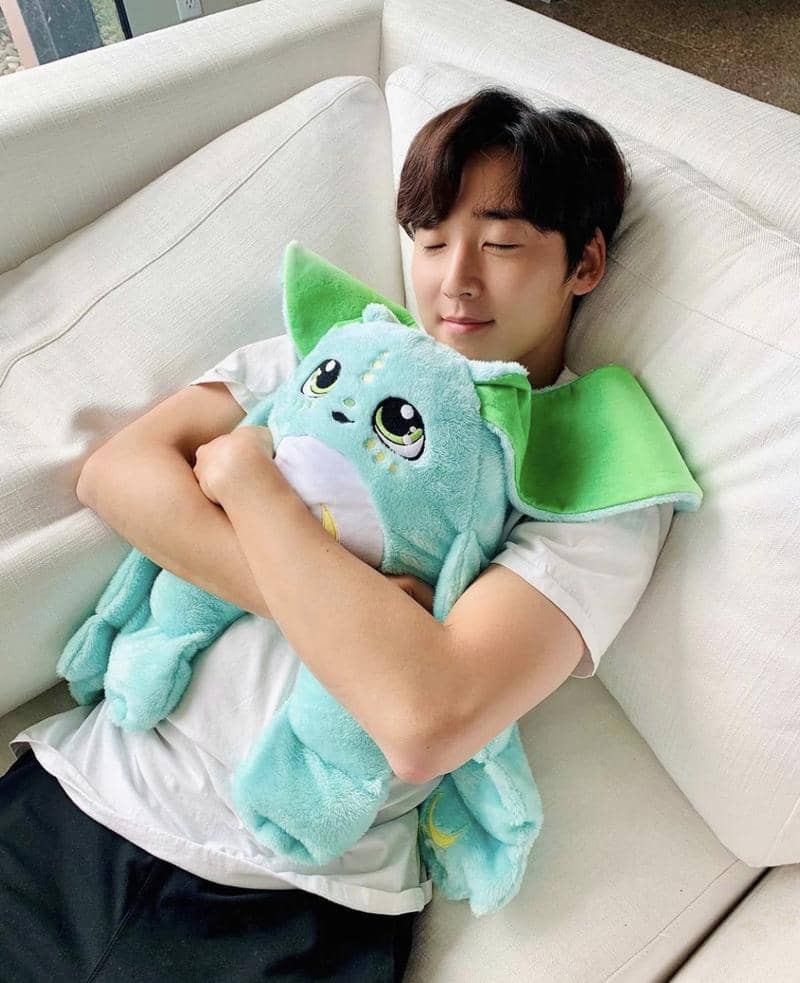





How to Hug
Your Moon Pal





The Best Hugs
Engineered to support calmer days and more restful nights, the best hugs come from Moon Pal's magically weighted body, arms, and legs! Hug your Moon Pal anytime you want to reset, recharge, focus, or wind down.
Dynamic Weighted Arms
Moon Pal's arms are designed with individually weighted compartments that form perfectly around your shoulders and neck to provide dynamic weighted pressure that optimizes an anti-anxiety therapeutic experience AND feels like a real hug!
Instant Relaxation
Magically weighted hugs use targeted pressure points to optimally disperse Moon Pal's weight. Lay Moon Pal across your body to recall the sensation of being held and enjoy ultimate stress relief and deeper sleep whenever you want.
Focused Calm
Moon Pals's weighted pressure is specifically helpful to feel calm and focused. Their curved, horseshoe shaped legs, dynamic arms, and malleable body ensure weight is always administered for an incredible feeling in any position.
Tactile Sensory Experience
Moon Pals are crafted with soothing, durable, plush fabric created specifically for cuddling and snuggling. You can also touch, fiddle, and stroke Moon Pal’s floppy, gradient, ears for an enriching multi-sensory experience!
SPREAD LOVE
HUGS FOR ALL




The Effect of Relaxation Therapy on Anxiety is Significant
Moon Pals may be a helpful adjunct prop to be used with and enhance relaxation therapy.
“The results of the present meta-analysis provide evidence that relaxation therapy reduces symptoms of anxiety, depression, phobia or worry in patients with anxiety disorders”
The overall effect of relaxation therapy on symptoms of anxiety was significant.Besides symptoms of anxiety, the current study presents evidence that the use of relaxation therapy can reduce symptoms of depression, phobia, and worry in people with anxiety disorders.
Kim, H. S., & Kim, E. J. (2018). Effects of Relaxation Therapy on Anxiety Disorders: A Systematic Review and Meta-analysis. Archives of psychiatric nursing, 32(2), 278–284.
Applying Pressure May Help Reduce Stress
Applying Pressure may help reduce stress; even a few minutes can help adults.
"Deep pressure may be useful for reducing maladaptive internalizing and externalizing behaviors, increasing attention to task, and reducing impulsivity, all of which would support the client’s ability to successfully perform daily life activities and engage in appropriate social-emotional, motor, and organizational tasks."
Reynolds, S., Lane, S. J., & Mullen, B. (2015). Effects of deep pressure stimulation on physiological arousal. American Journal of Occupational Therapy, 69(3), 6903350010p1-6903350010p5
Props Encourage Relaxation
Props may be useful or even necessary to achieve muscular relaxation while lying down.
"The use of pillows or props may be useful or even necessary as a catalyst for repose."
Hannon, J. C. (1999). Pillow talk: the use of props to encourage repose. Journal of Bodywork and Movement Therapies, 3(1), 55-64.
Weighted Therapy is Part of Sensory Integration
Slow rocking results in a drowsy or calming feeling. We think slow rocking with weight may increase this feeling.
"Slow, rhythmic movement, such as rocking, produces the opposite effect: decreased arousal experienced as calming or drowsiness."
Reynolds, S., Lane, S. J., & Mullen, B. (2015). Brief Report—Effects of deep pressure stimulation on physiological arousal. American Journal of Occupational Therapy, 69, 6903350010.
Multisensory Integration and Calibration
Tools that encourage cross-sensory calibration, which is useful early in life (children), can also be used to keep sense calibrated (adulthood).
"Behavioral, electrophysiological and neuroimaging evidence has shown that the accuracy and precision of the encoding of an event, congruent in space and in time, improves when the information from multiple senses is integrated.
To perceive a coherent world, we need to effectively combine signals from our sensory systems, and these signals can be complementary or redundant. In adults, redundant signals from various sensory systems — vision, audition, and touch — are typically integrated in an optimal manner resulting in better precision than estimates from individual senses.
To conclude, in combination, these results suggest that while the different sensory systems of infants and children are clearly interconnected, multimodal perception is not fully developed until later in life. Cross-sensory calibration may be a useful strategy to allow our brains to take into account the dramatic anatomical and sensorial changes that occur during early life, as well as keeping our senses calibrated."
Gori, M. (2015). Multisensory integration and calibration in children and adults with and without sensory and motor disabilities. Multisensory Research, 28(1-2), 71–99.
Late Development of Cue Integration
Adult-like precision of sensory cues emerge around ages 10 to 11 years; continuous stimulation of sensory systems is beneficial.
"Whereas young children can use sensory cues independently, adult-like precision gains from cue combination only emerge around ages 10 to 11 years [7-9]. Why does it take so long to make best use of sensory information? Existing data cannot distinguish whether this (1) reflects surprisingly late changes in sensory processing (sensory integration mechanisms in the brain are still developing) or (2) depends on post-perceptual changes (integration in sensory cortex is adult-like, but higher-level decision processes do not access the information)." [10]
Dekker et al., 2015, Current Biology 25, 2856–2861 November 2, 2015 ª2015 The Authors http://dx.doi.org/10.1016/j.cub.2015.09.043
Using toys and books together can be especially beneficial for child development
Using children’s books to develop ideas for pretending together while playing with toys is important for child development and also aids in the reduction of negative elements from electronic media.
"Pretending through toy characters (eg, dolls, animals, and figures) and associated toy objects (eg, food, utensils, cars, planes, and buildings) can promote the use of words and narratives to imitate, describe, and cope with actual circumstances and feelings. Such imaginative play ultimately facilitates language development, self-regulation, symbolic thinking, and social-emotional development."
Healey, A., Mendelsohn, A., & COUNCIL ON EARLY CHILDHOOD (2019). Selecting Appropriate Toys for Young Children in the Digital Era. Pediatrics, 143(1), e20183348.
Props improve children’s participation in family mealtimes
Toys have been studied and shown to help with improving participation at mealtimes.
"Props (such as toys) have been studied with children with autism spectrum disorder and improved child’s participation in family mealtimes.
Results of this study indicate props were used to promote a child’s participation in family mealtimes through supporting the regulation of the child or providing behavioral reinforcement.
Practitioners must consider that a family’s use of Props within mealtime has the potential to support participation for the child."
Hannon, J. C. (1999). Pillow talk: the use of props to encourage repose. Journal of Bodywork and Movement Therapies, 3(1), 55-64.
Stuffed animals can facilitate beneficial imaginary companionship
Stuffed animals can facilitate the creation of an imaginary companion which can be especially beneficial for honing social skills.
"Conceptualizing ICs as relationship partners has led to empirical work suggesting that the functional significance of these creations is partly rooted in children’s efforts to make sense of relationships and their different structures.
[this study defined an imaginary companion as follows] An imaginary companion (IC) is a character, sometimes invisible and sometimes embodied in an object such as a stuffed animal or doll, which is animated by a child and treated as real.
Conceptualizing ICs as relationship partners has led to empirical work suggesting that the functional significance of these creations is partly rooted in children’s efforts to make sense of relationships and their different structures.
‘...’ Gleason (2002) established that young children associate relationship characteristics with their ICs just as they do with real relationships.
Personified objects, for instance, often afford hierarchical relationships, in which the child plays the role of the parent or more competent partner. These objects, whether dolls, stuffed animals, or other objects, thus typically receive extensive nurturance and guidance from children.
Although ICs have not been studied extensively as a social context, some evidence suggests that they might prove useful to children for honing social skills in two ways. First, relationships with ICs—particularly friendships—are a risk-free way of practicing emotion regulation, and, second, much like other forms of play, play with ICs might provide a venue for practice of a large set of interpersonal social skills that foster successful social adaptation in adulthood.**
ICs offer a useful opportunity to practice friendship skills in a risk-free way.
In addition to the opportunities that ICs afford children for regulating emotion, play with ICs might provide a context for exercise or exploration of other specific behaviors or social skills useful in adulthood.
The fact that children’s relationships with their ICs reflect the social organization inherent in relationships with real others highlights the usefulness of this sort of play in the study of development and children’s emerging understanding of social hierarchies and networks. At the same time, ICs emphasize the psychological significance of play in helping children learn to negotiate and manage social interactions and use symbolism as a tool for understanding their own and others’ emotions and behavior."
Hannon, J. C. (1999). Pillow talk: the use of props to encourage repose. Journal of Bodywork and Movement Therapies, 3(1), 55-64.
All Children Rely on Sensory Integration
Stimulating interaction between sensory systems is important for children to develop necessary skills that will also be used later in life (adulthood).
"Yes. All children rely on the ability to successfully modulate and discriminate the sensory information they are receiving from the world around them to develop the skills needed to successfully participate in occupational roles, including that of a student. The school readiness skills that are influenced by sensory integration include, but are not limited to, the ability to sustain attention to task; follow directions (praxis on verbal command); complete a series of tasks independently (praxis); use in-hand manipulation skills; demonstrate handwriting skills including grasp, visual tracking, and visual praxis skills; use postural control to maintain an upright sitting position at a desk or on the floor; and demonstrate the gross motor skills needed to support play during PE and recess activities."
https://www.aota.org/-/media/Corporate/Files/Practice/Children/Resources/FAQs/SI%20Fact%20Sheet%202.pdf